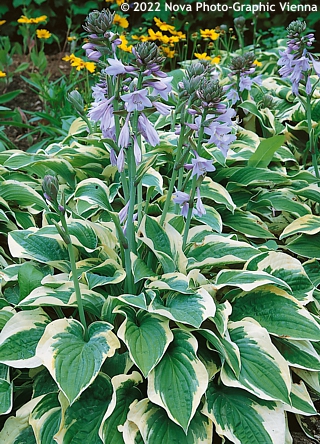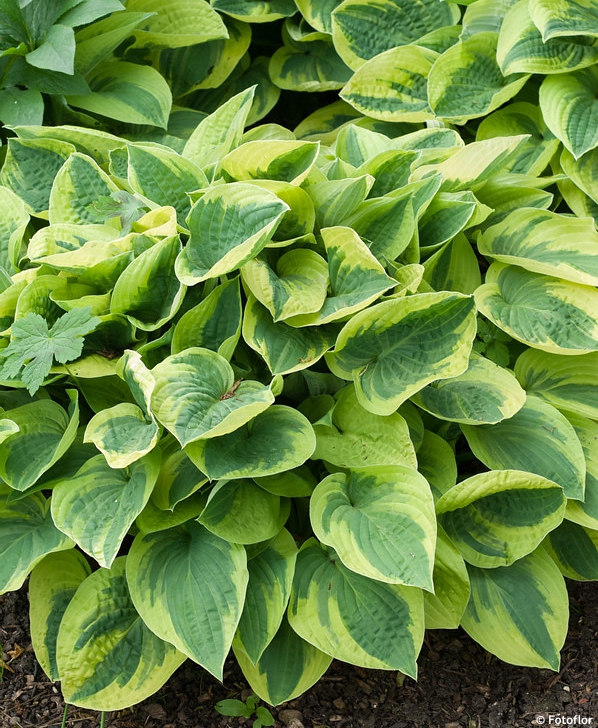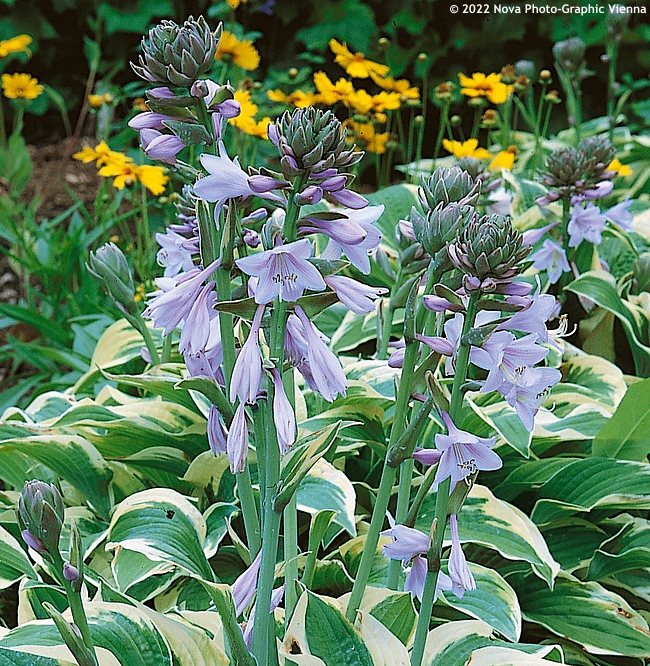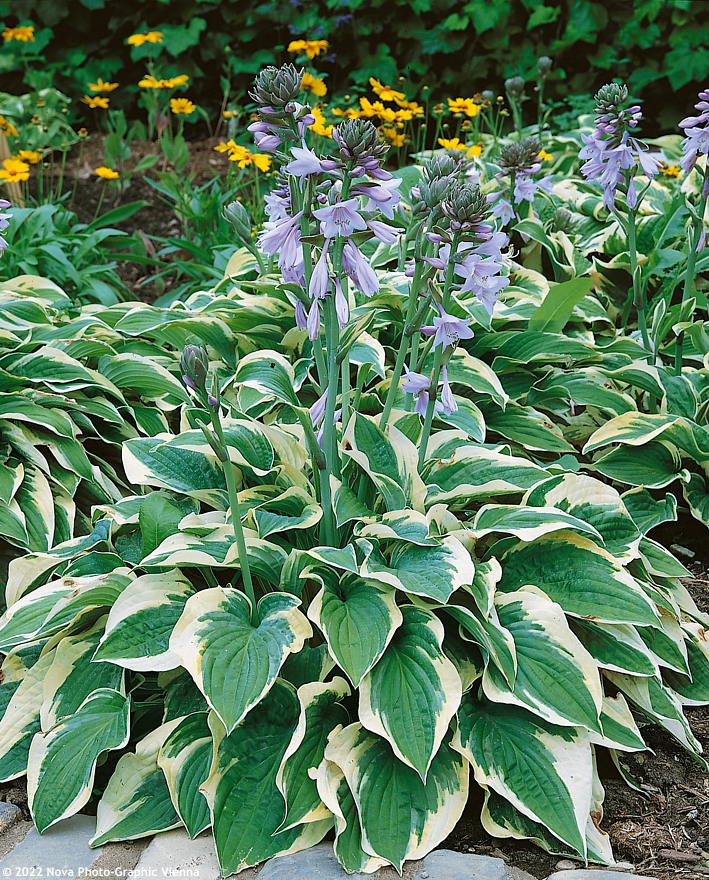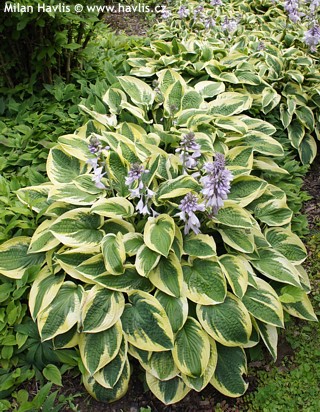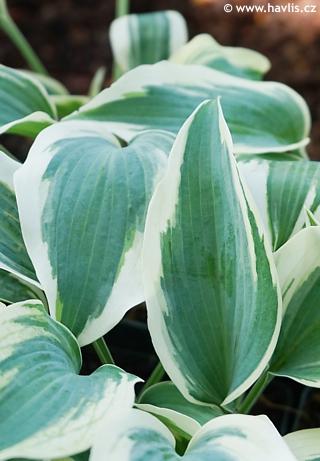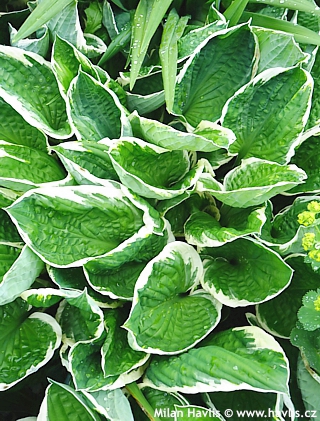Hosta 'WIDE BRIM' plantain lily
Hosta
Plantain lilies are reliable perennials from East Russia, Korea, China, and Japan. In the wild they grow in various locations – along rocky streambanks, in alpine meadows, as well as in not too shaded woodland. They are cultivated for their bold foliage, often variegated, and bell-shaped flowers in summer.
Wide Brim is a variegated plantain lily variety with broadly heart-shaped leaves. They are pale green to dark blue-green in the centre and have wide, light yellow (in spring) to creamy white (in summer) brims at margins. In late summer appear thick, 40-50 cm tall stems with numerous, pale lavender violet, narrowly bell-shaped flowers with thin, magenta purple stripes inside. Grow it as a clump or divide young plants and plant them nearby to create a dense groundcover. Wide Brim plantain lily prefers more light as opposed to many other variegated cultivars.
Hostas need constantly moist, fertile soil that never dries out – keep it always mulched. They respond well to fertilizing and produce stronger foliage and denser tufts. Ideal location is partial shade, or full sun with some shade during the day. Full shade is fine but plants may not flower as freely or at all. Drought can result in weakened plants that will be prone to diseases, and combination of drought and full sun will damage most variegated cultivars. Beware of slugs and snails who come to feast on their leaves without an invitation. Being deciduous, remove all wilted foliage from previous year in early spring and make sure not too damage emerging bourgeons. Hardy to about -40 °C (USDA zone 3).
Last update 26-02-2022
Goods are shipped all over Europe. For Russia and U.K. and for further details please read about SHIPPING OPTIONS HERE.
Are you interested in a serious discount for orders NOV-FEB? Check your options here.
THE PRICES INCLUDE VAT of 15%. For quick conversion you can use 1 CZK = approx. 0.04 EUR
- STANDARD QUALITY - Plants of this group are 1st class quality with number of branches and overall density adequate to their size and age, considering they were container grown.
- DE LUXE QUALITY - This label guarantees a luxurious quality of manually selected plants that, compared to their height and age, are exceptionally dense and beautiful.
- EXTRA - These plants are usually mature and bigger specimens with exceptional overall appearance.
- STANDARD (as described in the plant form) means a tree with a trunk of 190-210 cm and a crown at the top, unless specified differently. The commercial size for trees is their girth measured in the height of 1m from ground.
- HOBBY - These plants are of the same quality as our standard-quality plants but younger and therefore cheaper.
- SHRUB - a woody plant with branches growing bushy from the ground level.
- HALF-STANDARD or MINI-STANDARD - a small tree with shorter trunk, its size is usually specified.
- FEATHERED - These are trees with branches growing already from the base of the trunk and up along the stem.
- GRASSES and PERENNIALS - Sizes given usually read the diameter of the pot or the clump, as specified.

































